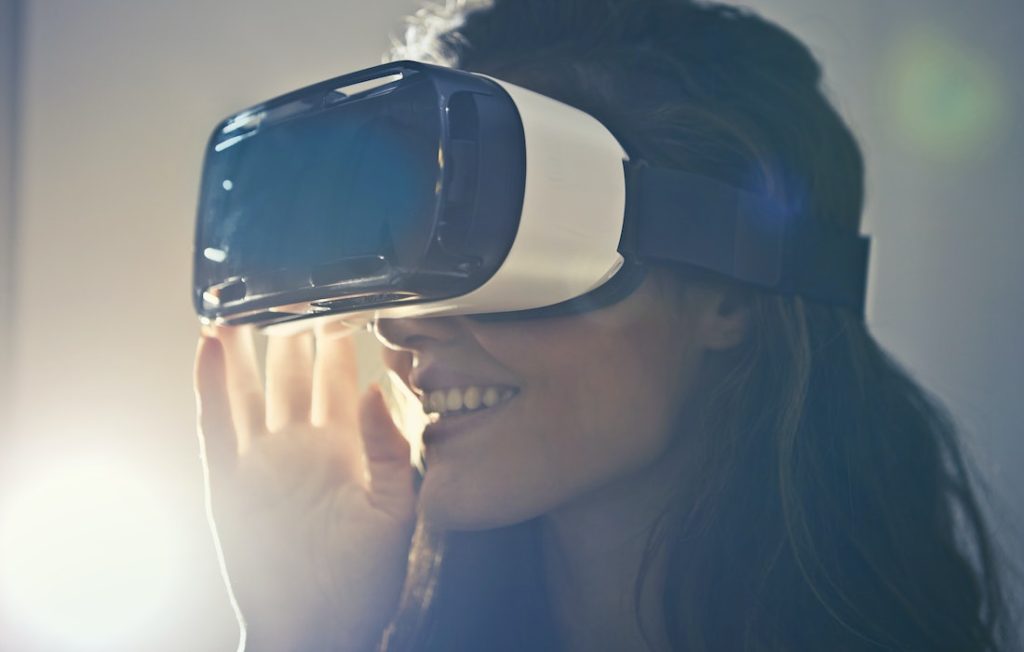I. Introduction
Mixed Reality (MR) is a technology that combines elements of virtual reality (VR) and augmented reality (AR) to create an interactive three-dimensional digital world. MR allows users to interact with physical objects in a virtual environment, allowing for more immersive experiences than traditional AR solutions. At its core, MR takes the best of both worlds – virtual reality and augmented reality – and brings them together to create an entirely new user experience.
Understanding the evolution of MR is essential for tech enthusiasts, digital nomads, and entrepreneurs alike. With its growing popularity, understanding how MR works and what new opportunities it presents to businesses will be vital in staying ahead of the trends. This article will explore the foundations of MR, its current and potential applications in business and technology, and its impact on AR.
II. The Foundations of Mixed Reality
Because MR combines VR and AR, it’s essential first to understand the basics of each. Virtual Reality (VR) is a simulated environment that users can interact with using various controls. Typically, VR requires specialized hardware, such as headsets or motion controllers, for users to experience the virtual world.
Augmented Reality (AR) is a technology that overlays digital content onto the real world. It can enhance existing physical environments or create entirely new ones. Unlike VR, AR requires no specialized hardware and can be experienced through smartphones, tablets, and computers.
Mixed reality (MR) combines these two technologies to create an enriched version of the real world. It can use sensors to detect the environment and add virtual objects that behave as if they are part of it. For example, MR could allow users to play a game in their living room by adding virtual elements that interact with physical ones.
Historically, MR has been difficult to implement due to the complexity of hardware and software required. However, recent advancements in technology have made MR much more accessible. From Project Tango to the HoloLens, companies are creating platforms that make MR more accessible to businesses and consumers alike.
According to statistics, a remarkable 90% of brand advertisers either implement or intend to utilize MR technology in their marketing campaigns. A study by Boeing also revealed that the incorporation of MR resulted in a notable 25% increase in productivity for product assembly tasks.
III. The Journey from Augmented Reality to Mixed Reality
With the rapid advancement of technology, AR and MR are no longer two distinct technologies. Combining elements of both in a single application or experience is possible. By bringing the best of both worlds together, companies can create immersive experiences beyond what is possible with either AR or VR alone.
For instance, an AR-based app could allow customers to try on clothing items and get expert advice virtually. Utilizing MR technology can take this concept further by bringing the virtual environment into the real world, allowing customers to make their decisions in more natural settings. Similarly, an AR app could create immersive educational experiences for children. MR technology can enhance these experiences with physical elements interacting naturally with the virtual world.
Many users generally prefer MR over AR experiences. This is likely because of its ability to merge virtual and physical elements more organically. MR also has the potential to create experiences that are much more immersive than either VR or AR alone.
IV. Advancements in Mixed Reality Hardware

While the software side of MR is still evolving, hardware advancements are already in full swing. For example, Microsoft’s HoloLens allows users to experience mixed reality through augmented reality glasses. The Magic Leap One, another MR headset, allows users to experience virtual and physical objects in the same space.
The Oculus Rift series is also a popular choice for mixed-reality experiences. The headsets provide an immersive virtual reality experience, allowing users to interact with their surroundings using motion controllers.
V. The Role of Software in Mixed Reality

Software is essential to MR. While the hardware provides the foundation for an immersive experience, it’s up to the software developers to create compelling experiences. From immersive gaming to interactive shopping experiences, the possibilities are endless with MR.
Game developers can use MR software to create virtual worlds that players can interact with. For instance, a game could have physical objects in the real world that affect the gameplay in a virtual world. Shopping apps can also use MR software to allow customers to try on clothing items or test out makeup virtually.
VI. Applications of Mixed Reality Across Industries
As MR technology becomes increasingly accessible, its potential for applications across many industries is immense. Companies are already leveraging technology to create immersive gaming experiences, educational simulations, medical tools, and virtualized architecture.
In the gaming industry, developers use MR to create interactive worlds that users can manipulate with motion controls. In the education sector, MR has been used to create immersive simulations that allow students to experience real-world scenarios safely. The healthcare industry also uses MR technology to develop improved surgical and medical training tools.
In architecture, companies leverage MR software to create virtualized representations of buildings. This allows architects and designers to immerse themselves in their projects before construction even begins.
VII. Challenges and Limitations of Mixed Reality
While the advancement of MR technology is impressive, there are still some limitations and challenges to overcome. For instance, the hardware cost is still relatively high for most consumers. In addition, there is currently a gap in available software developers with experience developing mixed reality platforms.
Additionally, many users have raised concerns about potential privacy issues related to the use of MR headsets and other tracking technologies. As this technology continues to evolve, it’s important for developers and users alike to be aware of potential privacy issues.
Lastly, there is the issue of safety. MR headsets require users to remain focused on a visual display while also interacting with their physical surroundings. This can be dangerous if not done carefully, resulting in accidents or even injuries.
VIII. Future Trends in Mixed Reality
Of course, the advancements in technology have not stopped with MR. As technology continues to evolve, people can expect to see even more impressive applications. Companies like Microsoft and Apple are already working on developing more advanced headsets, motion controllers, and software to create even more immersive experiences.
The world can also expect companies to continue leveraging MR technology across industries. From healthcare to education, the innovation potential is vast. Some of the biggest advancements will likely occur in the gaming industry, where developers can harness the power of MR to create engaging virtual worlds.
In the future, many businesses will likely be tapping into the potential of MR. Whether it’s to create immersive experiences for customers or to improve internal processes, MR is sure to play a big role in the future of technology.
IX. Augmented Reality’s Evolution Amidst Mixed Reality’s Rise
The AR and MR tech landscape is consistently evolving. Whereas just a few years ago, most applications were strictly AR-based, now, it is common to encounter MR experiences. Although some experts predicted that the rise of MR would diminish the importance of AR, this has not been the case.
Instead, many companies have found ways to use both technologies to create innovative and immersive experiences. Among the most prominent examples is Pokémon Go, a game combining AR and MR elements to create an interactive gaming experience.
Both technologies offer unique advantages and disadvantages, but their capabilities can be used innovatively. Augmented reality is more accessible than mixed reality, which could give it a leg up for businesses looking to engage customers without breaking the bank on specialized hardware.
At the same time, mixed reality can offer a more immersive experience than augmented reality, allowing users to interact with digital objects in a physical space. Ultimately, the choice between AR and MR depends on the application and the type of experience businesses want to create.
X. Mixed Reality and the Future of Entrepreneurship
Of course, the impact of MR is not limited to the tech industry. For entrepreneurs, mixed reality could provide new opportunities for innovation and growth.
For example, businesses can use MR technology to create innovative customer experiences that give customers a better idea of their products. Companies can also leverage MR to build virtual stores or showcase products in ways not possible with traditional AR solutions.
Mixed reality also allows entrepreneurs to build entirely new products and services. Companies can develop software to create virtual worlds or use MR hardware to provide enhanced customer experiences.
In the future, mixed reality will likely continue to become more accessible and popular among businesses and consumers alike. Entrepreneurs should consider incorporating MR into their business models and staying abreast of technological advancements to stay ahead of the competition.
XI. Conclusion

Mixed reality is a powerful technology that has already impacted many industries. Its ability to combine virtual and physical elements offers exciting opportunities for businesses, developers, and entrepreneurs alike.
With its growing popularity, understanding the basics of MR and its potential applications are key to keeping up with trends. More companies will likely continue leveraging MR technology to create immersive experiences, and entrepreneurs should consider how this technology can be used for their businesses.
Ultimately, the evolution of MR will surely bring many future surprises. As more companies continue to explore its potential, it’s clear that MR will be a major player in the tech industry for years to come.




